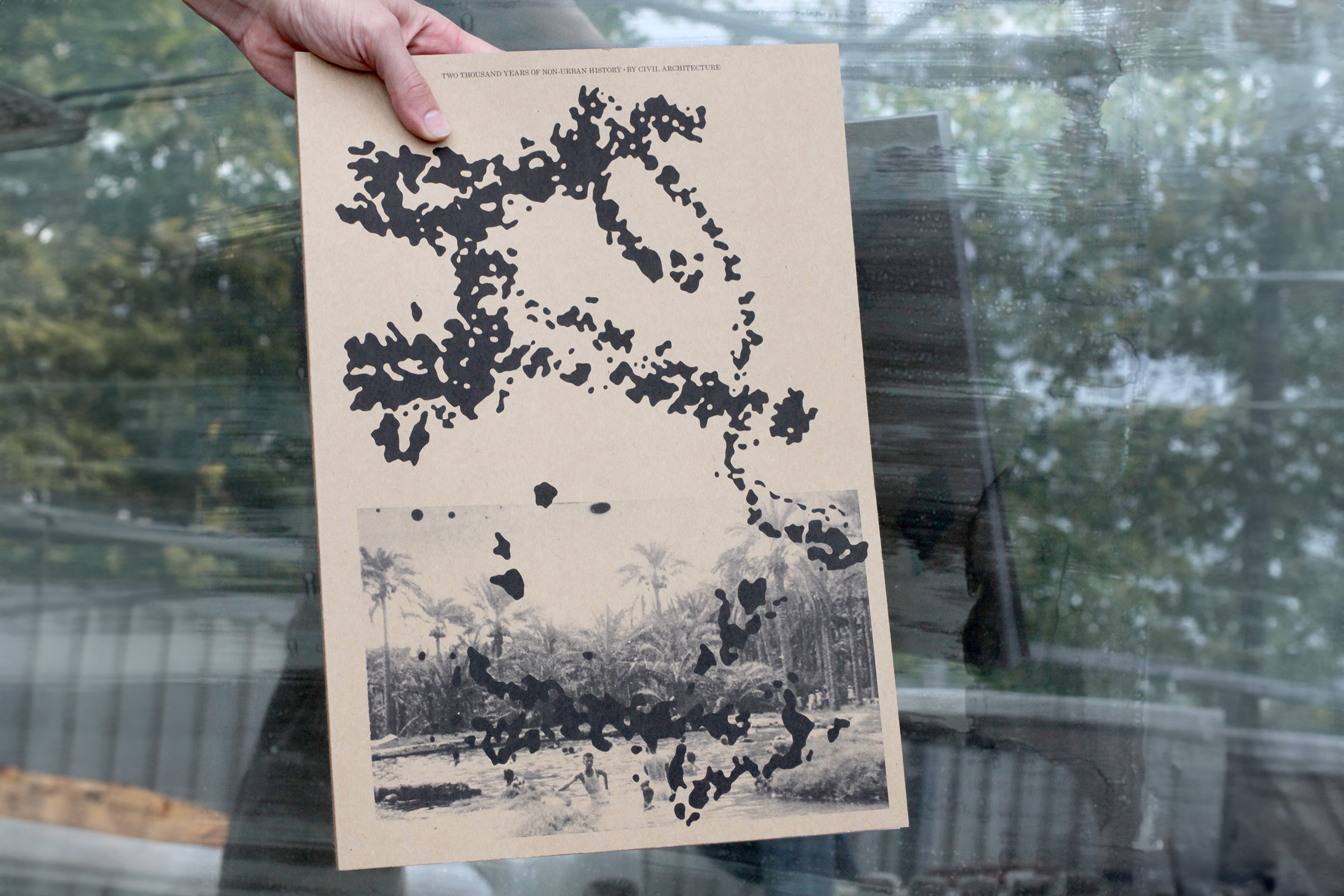The narrative of the oil economy has overwritten previous traditions of landscape and territory. This is evident in the long spans of highways that disinterestedly cut across the Arabian desert, the vast reclamation of the sea along the Gulf coast, and the clearing away of agricultural land to build cities. The idea of landscape has become synonymous with the urgent need to subdivide, plan, and develop property as the de facto engagement with territory. Technocratic solutions to the problems of living in an arid climate have replaced practices entrenched in land knowledge, and the availability of desalinated water and imported food has oriented the economy towards rent-based urban development, backed by oil revenues.



The publication studied three examples of formal planning prior to the discovery of oil: the desert kites across the Arabian Peninsula, the qanat/falaj water systems of the agricultural areas, and the fish traps of the Gulf coast.
TEXT:
CIVIL ARCHITECTURE
DESIGN:
STUDIO LOB (JANNIS ZELL & PHIL ZUMBRUCH)